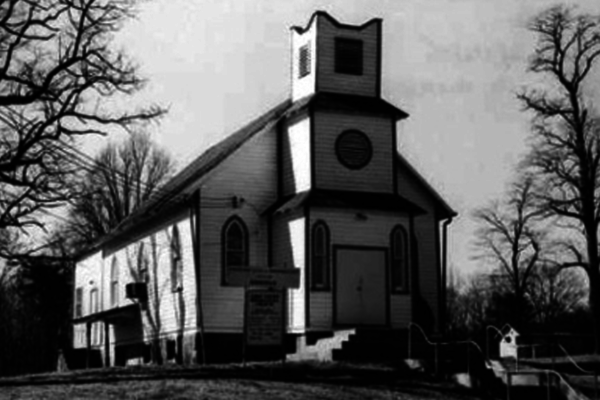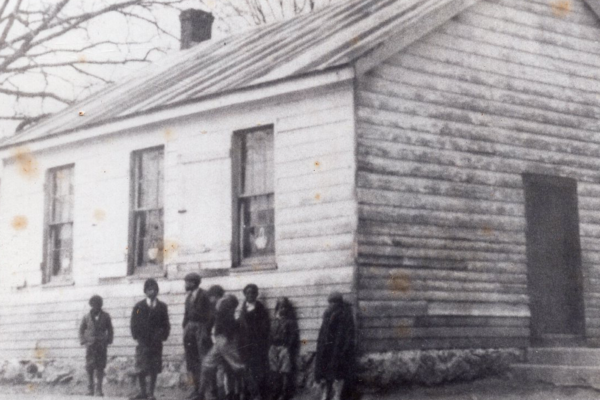The street you grew up on. The schools and churches you attended. How did they get their names? Who decided who belonged where? Those were some of the questions that Jason Green, a filmmaker who grew up in Gaithersburg, Maryland, wondered about.
Green, 39, knew he had an ancestor who helped build a school for Black children after the Civil War. But he thought that slavery and segregation were chapters in a dusty American history book, from a place “long ago, and far away.”
Green’s new documentary — one that’s deeply personal — shows how the past has shaped the present. It aims to show how decisions made by even the smallest communities can shape the future for generations to come.
“Finding Fellowship” tells the story of how the members of three Montgomery County churches — racially segregated churches — decided to merge in the aftermath of the assassination of Dr. Martin Luther King Jr. in 1968.
The story isn’t just Montgomery County history; it’s also family history.
A stunning moment of revelation appears as members of the Green family see historic documents with the names of their ancestors. They learn just a bit more about the people who shaped the Quince Orchard community.
“That moment for me was a hypothetical history becoming real. It was sort of taking it from the theoretical and making it really tangible,” Green said.
Green’s father, the Rev. Gerry Green, now 70, recalls attending segregated schools in Montgomery County.
After the Supreme Court ruled in Brown vs. Board of Education in 1954, the long process of integration began; but the other center of family life, the churches, remained segregated.
By the late 1960s three church communities in an area once known as Quince Orchard, but is now part of Gaithersburg, were struggling.
Pleasant View, the Black church founded by Green’s ancestors, sat on a three-acre plot alongside what is now Route 28 or Darnestown Road. Not far away, were two white churches, Hunting Hill Methodist Episcopal Church and McDonald Chapel Methodist Episcopal Church.

All three churches faced similar challenges. Their congregations and their finances, were dwindling. All three wondered whether they could continue to survive as independent entities.
There was talk of merging the congregations. And on the night of April 4, 1968, members of Pleasant View were holding a meeting on the issue. They were expected to vote when they got the news that Martin Luther King Jr. had been assassinated.
A prayer circle organized outside the church, and the Rev. Harton, a white pastor, led those gathered in prayer, Gerry Green recalled.
“As he prayed, I didn’t close my eyes. I wanted to watch him. I noticed there was a tear that was trickling down his cheek … and what moved me was there was this white man who was moved by the death of this Black man. And it said to me that Dr. King’s death was about more than rights for Black folk, it was about human rights,” according to Gerry Green’s recollection.
Eventually, the merger would put all three congregations into a new building — Fair Haven United Methodist Church. Pleasant View, the Black church, still stands, and the Green family and the church community have hopes for its restoration.
The film also addressed the concerns about the merger — that integrating the church communities would lead to a loss of the special role that Pleasant View had played in the lives of Black residents, as well as the changes that would come to the congregations of Hunting Hill and McDonald Chapel.
“Because as riots were taking place in cities, these three congregations decided that that’s not how we wanted to address this issue”; instead they wanted to live the legacy of King, Gerry Green said.
Gerry Green said the story in the movie is timely and needs to be told now more than ever.
On Pleasant View, Gerry Green said, “That site is significant now because of all the vitriol and turmoil that’s going on currently. We need to hear stories where people were able to come together and create the possible. Where people were able to come together and say yes, there is hope.”
There’s a need to hear the stories of people who were willing to join together “to create a new and different and bright future,” Gerry Green said.
Jason Green, who has been involved with efforts to preserve Pleasant View, has been screening “Finding Fellowship,” and he hopes to find a home to distribute it.
“We’re in conversation with different platforms like Amazon Prime and Netflix, and just trying to find the right home for a film like this,” Jason Green said.
He’s also working on versions that could be tailored for classroom use and for community distribution.
The Pleasant View site includes the church, a schoolhouse and a small burial ground. It has been designated as a historic site by Montgomery County, and there’s an ongoing fundraiser with a goal of raising $1 million. The fundraiser is online here.

Gerry Green said that there are plans to use the schoolhouse for educational programs, replace a third building that had been destroyed by fire and use that for community events, and stabilize the church building.
“If you drive past, you’ll notice there’s a bell tower that is leaning, and it’s not just a little lean” Gerry Green said. “You wonder if there’s a strong wind, it’ll come along and blow it over.”
The Green family sees Pleasant View’s future as another site for bringing people together, knitting strong bonds in the community, and as the title of the film says, a place for finding fellowship.








